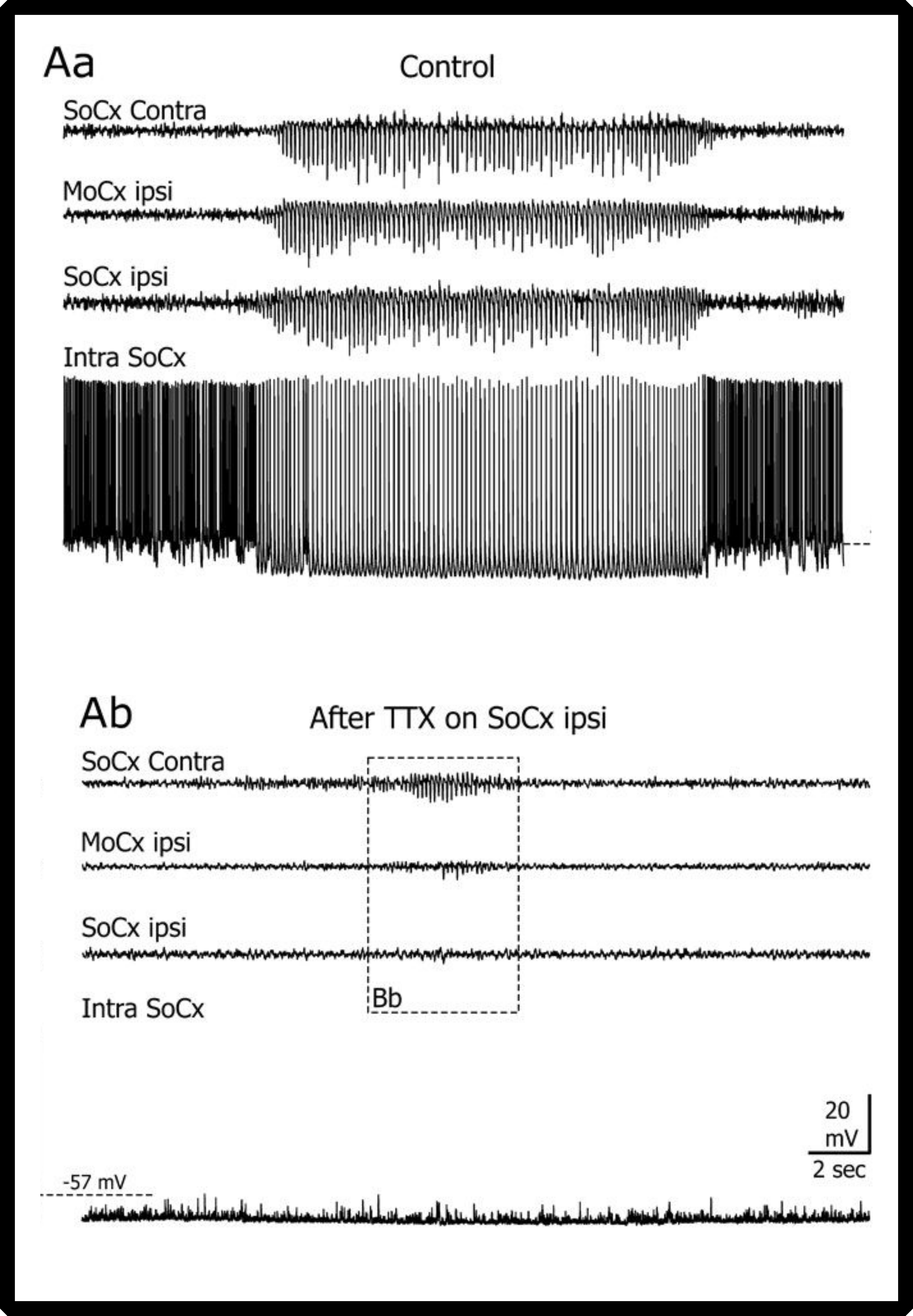Suppressing the activity of the ictogenic focus
Polack P-O., Mahon S., Chavez M. and Charpier S. (2009) Inactivation of the somatosensory cortex prevents paroxysmal oscillations in cortical and thalamic neurons in a genetic model of absence epilepsy. Cerebral Cortex. 19(9): 2078–2091.
This article prolongs the research initiated in our 2007 paper. We obtained novel evidence for the cortical focus theory of absence epilepsy. We reported that blockade of action potential discharge and synaptic activities in facial somatosensory cortical neurons, by topical application of tetrodotoxin, prevents the occurrence of paroxysmal activities in local and distant cortical neurons and ECoGs, as well as in thalamocortical neurons in register with the somatosensory cortex. In contrast, pharmacological inhibition of a remote motor cortical region or of the related thalamic nuclei did not suppress ictal activities in the somatosensory cortex. This study demonstrated that SWDs in GAERS have a focal origin within the facial somatosensory cortex, which is sufficient and necessary to generate ictal activities.
Figure
Caption
Impact of TTX application on the somatosensory cortex upon spike-and-wave activity. (A) Intracellular activity of a deep-layer neuron of the somatosensory cortex (bottom trace) simultaneously recorded with the ECoG waves from ipsilateral somatosensory cortex (SoCx ipsi), motor cortex (MoCx ipsi) and contralateral somatosensory cortex (SoCx contra), before (Aa) and after (Ab) application of TTX on the ipsilateral somatosensory cortex. Note that TTX affected spike-and-wave activity in all ECoG records.



